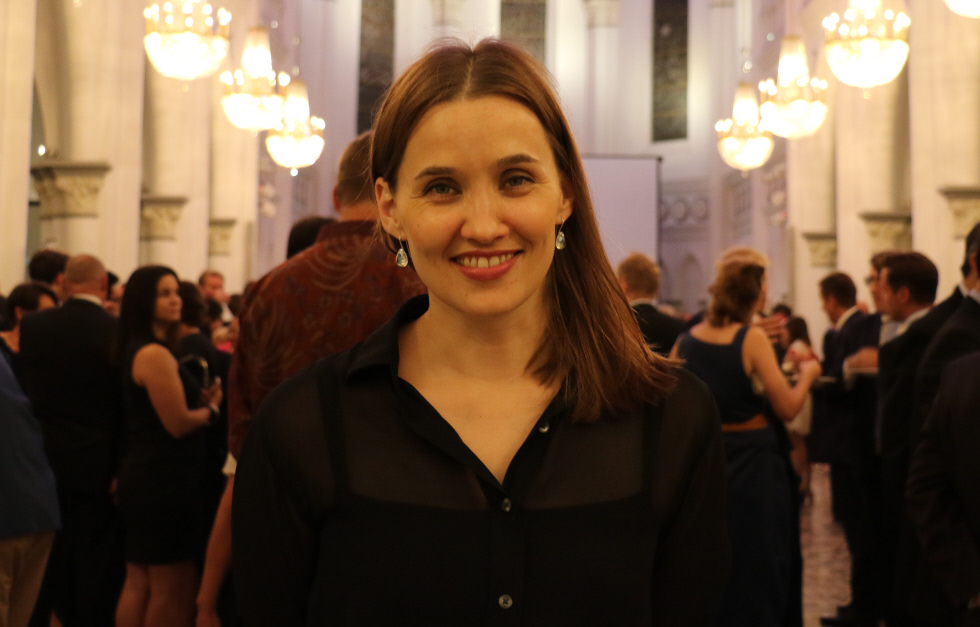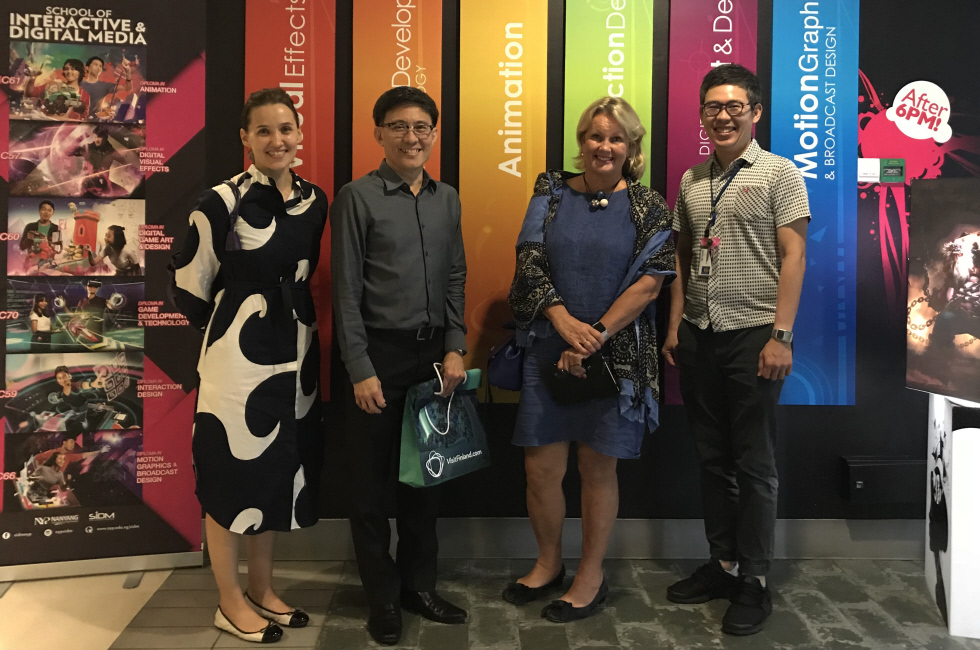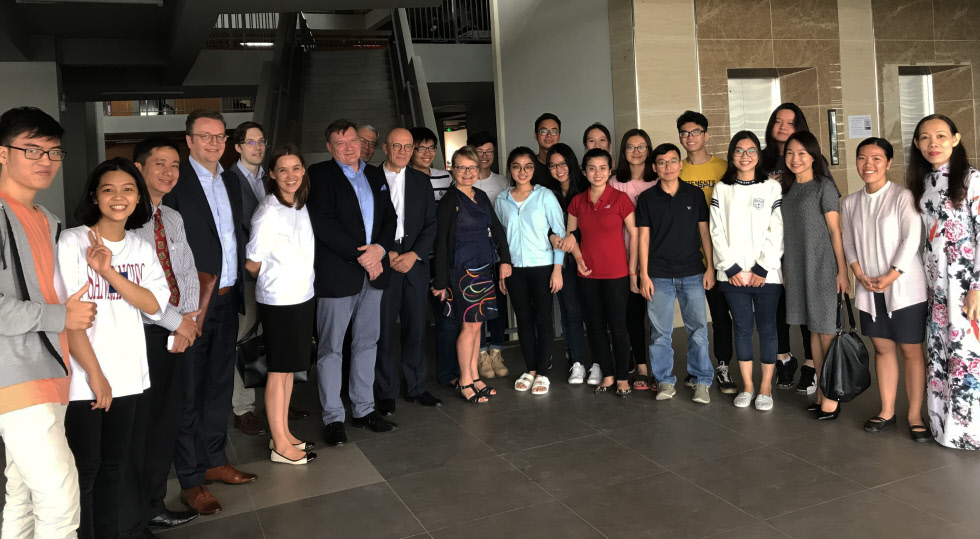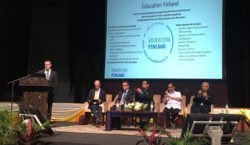As Finnish education and know-how has increasingly become an export product, paired with rising start-ups within edutech going international, Finland’s Ministry of Education has strengthened its presence in the Finnish embassies with specialist positions, one appointed to Singapore, Education and Science Counsellor Anna Korpi.

Covering Southeast Asia she is especially tasked to make Finland’s higher education and research communities more internationally linked but also to attract talent to Finland and upgrade the overall quality. Strengthening brand Finland as an education, science and innovation country is definitely on the agenda for the Team Finland Knowledge network that she belongs to.
One element is to facilitate not only education export, but better collaboration, including all non-commercial activities and traditional academic and research cooperation, explains Anna Korpi.
“It’s also about seeing what we can learn from these countries. For example the Southeast Asian economies and societies are developing so rapidly and the pace is amazing. And even though people come to Finland to study our entrepreneurship and start-up ecosystems, the economies here are also booming and entrepreneurially-spirited. On the other hand, for example Singapore is developing its education and knowledge with many interesting models, so the idea is also to bring back those messages to refresh our own policy-thinking in Finland.”
Piloting Finnish education export
As Counsellor she will also help companies and organisations to do business here in Asia in the field of education, something Anna Korpi has own experience in doing from her previous position.
She worked for a Finnish education company, EduCluster Finland, first in the Gulf region, and during the last four years both in China and Southeast Asia. Crucially, she was then active in piloting different ways to export Finnish education solutions, practices or know-how to different parts of the world. Anna worked with different projects together with other Finnish organisations and usually the government in the different countries.
“That has offered me the window, first of all, to see the interest in Finnish education from different countries and regions but also to see at close hand how these kinds of operations are built, how they grow, what mistakes one does and where one can succeed. So I have seen the evolution of these operations at close hand.”
“Whenever we work in somehow a targeted way, with defined pilots and in a way where you can actually influence different elements of an education system at the same time – there we can get actual impact. But overall I think the Finnish education, especially the student-centred educational approach, with high-level pedagogical skills of teachers are our core value adds we can share to the world. Our education system as a whole in Finland is very good,” is her conclusion from these efforts.

Much adaptation is anyhow needed but where we can add value is on the grassroots level. Seeing is believing; often the first people you need to convince are the parents of the students. The Asian systems are often very top down, very different from the Finnish model. Before you start to completely overhaul another system you have to have the flagships or the pilots that show impact and results, continues Anna.
“I think the best results I have seen have come from either having a full-scale school operation, where the Finnish model is used as a whole, or the different teacher training, teacher upskilling capacity building and in-service practices Finland has been active with during the past years.”
As for teacher training she says it must be taken step-by-step. One can’t expect teachers to fully go for Finnish-style student-centred teaching and learning after a one-week training programme. On the other hand, a true shift requires the support of the whole system or the school, especially the support of the school leadership.
Delegations pouring in
The main reason why Finland has been able to take the lead in education results and building this next export product comes from the huge international interest in Finnish education since the early 2000s as a pulling effect. That is when the PISA results started, where Finland was in the top year after year. Hence delegations started pouring in to see what made Finnish education so successful, overwhelming the Finnish Ministry of Education in the process.
“I think we always knew we had a good system but did not think it was that extravagant, until we started to have this huge international interest. Then we also woke up to the idea that we needed to define what the education solutions actually were that could be of value to somebody else, to some other systems and how do we needed to be able to adapt them etc.”
That is also when Finnish education organisations realised the need to establish some business entities or operations to answer to these needs and new opportunities.
University of Jyväskylä was one of the first, in connection to a substantial project in Abu Dhabi to establish a specific subsidiary company for education export.
In parallel, Anna also thinks that the shift in education and the modernisation of education is ongoing everywhere, and all the countries are realising that it is the way to go; modernising education and thinking of ‘future schools’ concepts.
“How countries address it differs quite a lot. Singapore has scrapped at least two of the standardised tests from the first levels in primary school. I think this is also from the same purpose, that what we need is more creative thinking people who are geared towards innovating rather than memorising. Singapore has been quite forward-thinking even though their system is quite different from ours.”
“Finland, I think, has always been quite good at implementing and rolling out things that we plan on the education policy level So, often visitors to Finland say that it is remarkable that the same things that are in the policy documents they also see on the classroom-level in the everyday schools. I think that in education, as in all policy making, it’s quite easy to write down fancy ideas and goals. For that to happen in real life is another thing.”

“In Finland the strength in our system to implement reforms well is thanks to how people from the grassroots have been part of making the reforms; it’s not something that is dictated from top-down. For example there were some that found the latest curriculum reform overwhelming. There is also a push for more digitalisation of learning and use of more technologies, so with all the reforms there are people that don’t take change that well. That is the reality and we have recently invested quite a lot in cascading the processes in our schools. Some teachers are trained for the technology use and newest tools and they then work as mentor teachers to coach the others. We have learnt that when you have as highly capable professionals as our teachers are, peer learning is a very effective way to approach new skills requirements.”
Screening the education landscape
When it comes to exporting the Finnish education methods to Asia the national education regulations must also be taken into account.
“For example, if you want to establish a school or kindergarten in Vietnam there is still the need to fulfil regulations in terms of the curriculum or possibly to have a local partner. And in the higher education field you need to be registered or certified with the local authorities. My job is also to try to map these requirements and see where the opportunities for cooperation are.
“Finnish universities are interested in having collaborations with Singapore Universities but then I hope to all also raise awareness that they need to have better connections to the rest of Asean as well, to be a bit future-oriented also there. Some of the next top hundred universities are probably there.”
Anna is spending her initial time screening the field, really finding out what collaborations are already ongoing,
“There have even been many Finnish delegations visiting Singapore and we don’t have a clear picture of what all already exists. My mapping also includes meeting with local partners here to understand better the interest towards Finland so that we build collaborations on genuine interest and added value.”
The concrete agenda for the Team Finland Knowledge work in Southeast Asia will be gradually developed. Anyone is welcome to contact Anna, whose job, in a nutshell, is to help all kinds of educational and science collaborations to happen.

